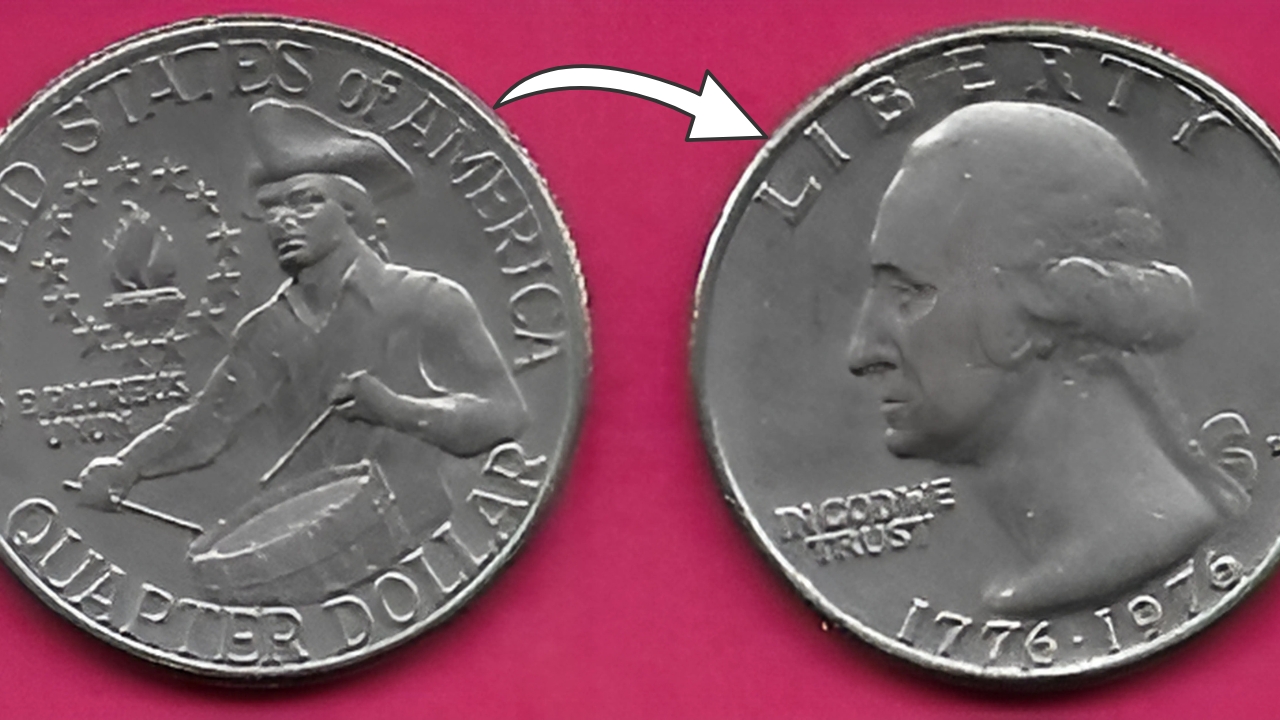The numismatic world holds special fascination for coin collectors focusing on American dimes and quarters, particularly rare specimens and commemorative issues.
This comprehensive analysis explores ten of the most valuable dimes in U.S. coinage history and examines the distinct value of the Bicentennial Quarter, offering insights for both seasoned collectors and newcomers to numismatics.
Rare Dimes That Command Premium Values
1894-S Barber Dime The 1894-S Barber Dime stands as one of the most legendary rarities in American numismatics. With only 24 pieces minted and merely nine known to exist today, this San Francisco Mint specimen commands exceptional valuations. Recent sales have exceeded $2 million for specimens in premium condition, making it among the most valuable dimes ever produced.
1916-D Mercury Dime The 1916-D Mercury Dime represents a key date in the series, with only 264,000 pieces minted at the Denver facility. Well-preserved examples regularly command prices exceeding $10,000, while exceptional specimens can reach $100,000 or more. The limited mintage and high demand among collectors contribute to its sustained value.
1873-CC No Arrows Seated Liberty Dime This Carson City Mint rarity sees particularly strong demand due to its historical significance and scarcity. With fewer than 20 authenticated specimens known to exist, prices for this variety regularly exceed $50,000 in circulated condition, while pristine examples command substantially more.
1798/7 Draped Bust Dime This overdate variety represents an important early American rarity. The distinctive feature of the 8 punched over a visible 7 creates strong collector interest. Well-preserved examples routinely sell for $20,000 or more, with finest-known specimens reaching six-figure amounts.
1844 Seated Liberty Dime While not as rare as some other entries, the 1844 Seated Liberty Dime in exceptional condition commands significant premiums. Mint State examples are particularly scarce, with finest-known specimens valued above $25,000 due to their condition rarity.
1797 Draped Bust Dime, 16 Stars This early American dime variety features 16 stars rather than the more common 13, representing a distinctive error in design. With fewer than 100 examples known across all grades, well-preserved specimens regularly achieve prices exceeding $30,000.
1874-CC Arrows Seated Liberty Dime Another Carson City Mint product, this date combines the desirability of the CC mintmark with the distinctive arrows at date design feature. Mint State examples are exceptionally rare, with premium specimens valued above $40,000.
1921-D Mercury Dime While not as rare as some earlier issues, the 1921-D Mercury Dime represents a key date in the series. High-grade examples are particularly scarce, with Mint State specimens regularly commanding $15,000 or more in today’s market.
1805 4 Berries Draped Bust Dime This distinctive variety features only four berries on the reverse wreath rather than the usual five. The scarcity of high-grade examples drives values upward, with well-preserved specimens achieving prices above $20,000.
1846 Seated Liberty Dime The 1846 represents another condition rarity in the Seated Liberty series. While more common in circulated grades, Mint State examples are exceptionally scarce, with finest-known specimens valued above $30,000.
The Bicentennial Quarter: Historical Significance and Value
The 1976 Bicentennial Quarter was created to commemorate America’s 200th anniversary of independence. These quarters feature a distinctive reverse design depicting a Colonial drummer and a victory torch encircled by 13 stars, representing the original colonies.
Valuation Factors
Standard Circulation Issues Most circulated Bicentennial Quarters hold minimal premium value above face value, typically worth 25 cents to $1, depending on condition. However, several factors can significantly increase their worth:
Mint State Condition Uncirculated specimens in pristine condition (MS-65 or better) can command prices ranging from $5 to $25.
Silver Composition Variants The 40% silver versions, produced specifically for collectors, typically value between $5 and $20, depending on condition and market demand.
Error Varieties Several known error varieties exist, including:
Double Die varieties
Off-center strikes
Missing clad layer examples
These error coins can command significant premiums, with some exceptional specimens reaching several hundred dollars.
Investment Considerations
For Rare Dimes:
Authenticity verification through professional grading services is essential
Condition plays a crucial role in value determination
Historical documentation and provenance can enhance value
Market trends and collector demand influence pricing
For Bicentennial Quarters:
Focus on exceptional condition specimens
Silver composition examples offer greater potential appreciation
Error varieties provide opportunities for value discovery
Large mintage numbers generally limit broad value appreciation
Conservation and Preservation
Proper storage and handling remain crucial for maintaining coin value:
Use appropriate storage materials (acid-free holders)
Maintain stable environmental conditions
Avoid cleaning or chemical treatments
Document provenance and certification
Market Outlook and Collection Strategy
The rare dime market continues to show strength, particularly for finest-known specimens and historically significant pieces. Collectors should:
Focus on quality over quantity
Verify authenticity through reputable sources
Consider historical significance in acquisition decisions
Maintain detailed records of purchases and provenance
For Bicentennial Quarters, strategic collecting involves:
Identifying exceptional condition specimens
Focusing on silver composition examples
Searching for documented error varieties
Understanding market limitations due to high production numbers
10 Rare Dimes and a Bicentennial Quarter
The world of rare American dimes represents a fascinating segment of numismatics, with certain specimens commanding exceptional valuations based on rarity, condition, and historical significance.
While the Bicentennial Quarter generally sees more modest valuations due to high production numbers, certain specimens – particularly errors and high-grade examples – can offer interesting opportunities for collectors.
Success in this collecting field requires careful research, authentication, and an understanding of market dynamics. Whether focusing on rare dimes or seeking exceptional Bicentennial Quarter specimens, collectors should emphasize condition, authenticity, and proper preservation to maximize both enjoyment and potential value appreciation.
